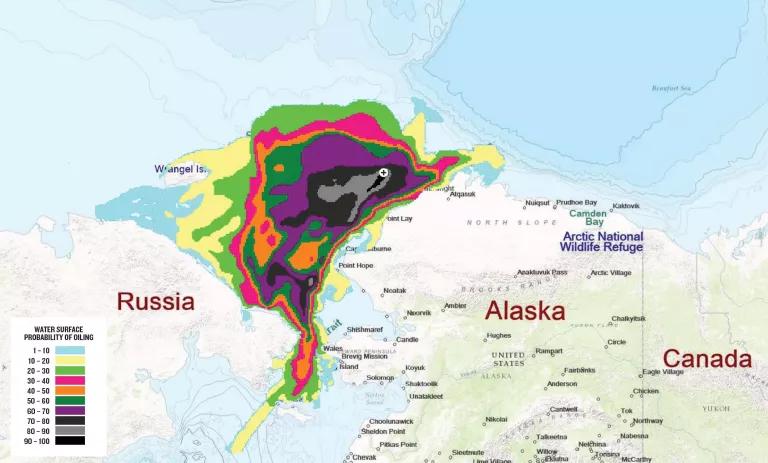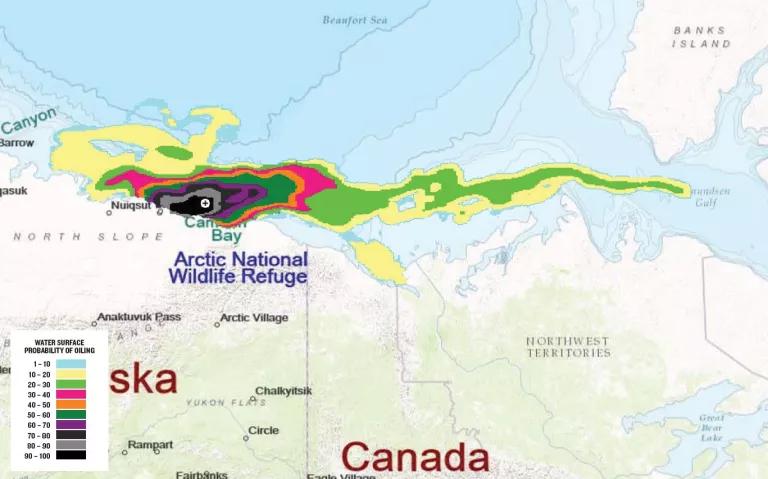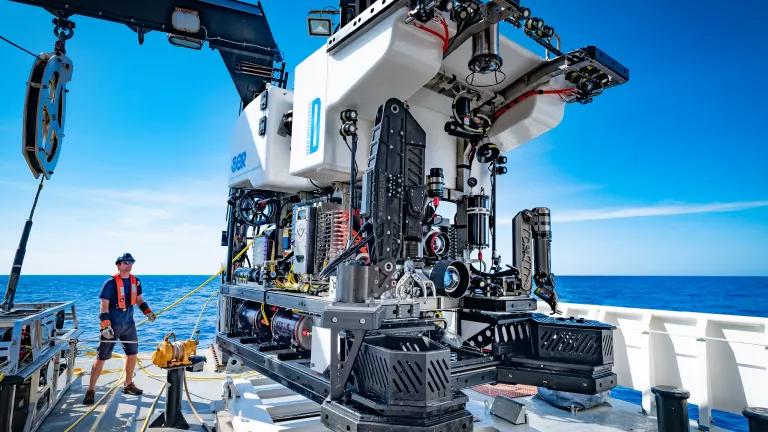
It doesn’t take a genius to see that drilling for oil in the Arctic Ocean is a really bad idea. Now, a new NRDC report, The Fate of the Arctic in Offshore Oil Blowouts, gives us a better idea of just how bad.
Even ignoring the risks of a major spill, we know the Arctic Ocean is a terrible place to look for our energy future. The oil there is 30 years away from reaching consumers. By then, we’ll have to mostly replace fossil fuels with clean alternatives, or lose the battle against climate change. In fact, researchers have found that drilling for oil there undermines our chances of averting climate disaster—it’s a pathway to double the global warming that’s even arguably tolerable for humankind.
And we know the spill risks are really high, as well. The Arctic Ocean is remote and icy, hypersensitive, and an impossible place to clean up oil. So we have no way to prevent devastating impacts to its whales, walruses, polar bears, belugas, and other wildlife.
But until now, we didn’t really know just how far and wide the oil from a plausible Arctic Ocean well failure could spread.
To find out, NRDC commissioned a study using state-of-the-art industry software to model the possible trajectories from a blowout at sites where Shell held leases, before its retreat.
The answer, it turns out, is really far and really wide.
The study looks at three real-world scenarios in the Chukchi Sea, off the western part of U.S. Arctic coast, as well as three more in the Beaufort Sea, off the eastern part. It starts with release rates for Arctic wells, as estimated by the federal government, and lowers them by 20 percent—about the amount by which surface response measures reduced the oil from the 2010 Deepwater Horizon disaster in much the calmer and accessible Gulf of Mexico. It considers blowouts capped in 10 days, controlled by a relief well drilled in 33 days (record time), and occurring too late to control before pack ice and the dark Arctic winter descend.

The results—showing the areas at risk—are terrifying. Here’s the likelihood of oil spread from a late season Chukchi blowout. Oil could travel 700 miles clear down through the Bering Strait. To put that in perspective, Deepwater Horizon oil spread only about 400 miles. It could hit some 600 miles of Alaskan coastline—and even more in Russia. It would likely spread over Hanna Shoal and Barrow Canyon, areas of such great and sensitive marine life that President Obama acted last year to specially protect them.

The Beaufort spill scenarios are equally horrifying. Each one has a 90 to 100 percent likelihood of reaching the Alaskan coast. Each one threatens the coast of the Arctic National Wildlife Refuge, justly described by President Obama as “an incredible place” that “supports caribou and polar bears, all manner of marine life, countless species of birds and fish, and for centuries [has] supported many Alaska Native communities.” Oil from the 33-day scenario, shown here, could reach far into Canada.
That’s not the end of the bad news. The administration of President-elect Trump is very likely to target the Arctic Ocean for drilling. His transition website says he aims to open up federal offshore waters to fossil fuel leasing. The head of his Energy Department transition team, Thomas Pyle—a former Koch Brothers lobbyist—flat-out predicted in a leaked memo that offshore drilling would occur in the Chukchi and Beaufort. And his choice for Secretary of State ran drilling operations in Russia for ExxonMobil, which had a contract to explore for oil in the Russian Arctic Ocean until sanctions over Crimea put it on ice.
But there’s a fix. President Obama has specific statutory authority to bar all future oil and gas drilling in the federal offshore waters that need protection. He’s already done that for smaller areas, and numerous presidents on both sides of the aisle have done so before him.
If there was any doubt about the need for that, this report puts them to rest. Drilling in the Arctic Ocean puts vast stretches of our last really pristine seas at risk of a devastating spill. We don’t need the oil and we can’t afford the downside. Time for President Obama to end the threat for good.




